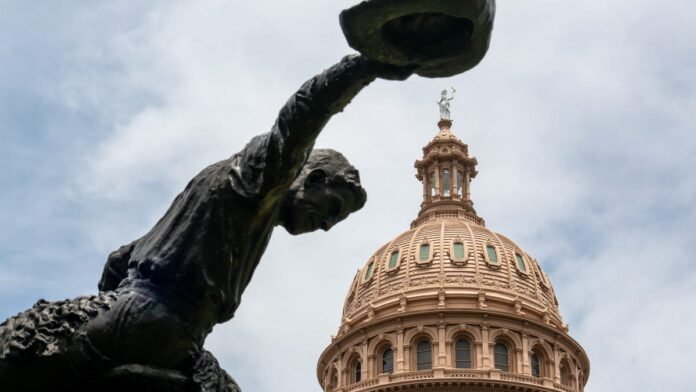At Trump’s urging, Texas Gov. Greg Abbott has requested lawmakers potentially redraw the state’s electoral map. Opponents warn it could backfire.

Here’s how redistricting could impact the future of the US Congress
Legal battles over redistricting are taking shape around the country. But what is it and how can those maps impact voters? Here is what we know now.
WASHINGTON − Texas state lawmakers head back to work on July 21 with a 30-day special session that’s set to be dominated by a controversial redistricting effort pushed by President Donald Trump.
If Trump gets his way, Republicans could acquire new U.S. House seats in Texas, potentially saving their paper-thin majority in next year’s midterm elections.
“Just a very simple redrawing, we pick up five seats,” Trump told reporters on July 15.
Some Republicans worry it’s not so simple.
Red districts, red lines
Gov. Greg Abbott has requested, at the White House’s urging, that the legislature consider redrawing lines for a handful of Texas’ 38 congressional districts, giving Republicans the chance to flip seats red in the upcoming 2026 midterm elections.
The prospect is raising Democratic hackles inside and out of the Lone Star State.
In California, Democratic Gov. Gavin Newsom is threatening to fight fire with fire. Former congressman and serial Texas candidate Beto O’Rourke has advised Democrats to do just that.
Republicans are treading carefully, amid warnings that the controversial move – lumping reliably red voters into Democratic districts in order to shift election outcomes – could come with the unintended consequence of endangering incumbents in formerly safe districts.
Here’s what to know about the potential redistricting effort as the Texas legislature’s summer session gets underway.
Trump team urges redraw
The New York Times reported in June that Trump’s political team was nudging state leaders to shift district boundaries to favor Republicans in contests up to five House seats.
A district redraw in the middle of the decade is rare – typically states make those changes at the beginning of each decade, when new Census data becomes available.
But Republicans are staring down the barrel of historical precedent, in which the party that does not hold the White House often has the advantage in midterm congressional elections.
Speaker Mike Johnson, R-Louisiana, already has the tricky task of navigating a narrow eight-seat majority, three of which are expected to be filled by Democrats in special elections later this year.
Chance of a backfire
Republicans currently control 25 of the state’s 38 congressional districts.
Democrats have long salivated at the prospect of turning Texas blue. And now, they argue, any aggressive gerrymandering that squeezes Republican voters into neighboring districts could backfire and put the red districts they left at risk of a Democratic pick up.
“Texas Republicans are likely going to continue to act like political punks and bend the knee to Donald Trump’s extreme agenda,” House Minority Leader Hakeem Jeffries, D-New York, said at a news conference July 15. “In doing so, they will jeopardize their own electoral careers.”
Rep. Pete Sessions, R-Texas, said in June that the House Texas delegation was working to “be on the same page” about potential drawbacks of a 2026 redraw.
“We assured each other, you need to bone up. We need to have a conversation,” Sessions told reporters. “We need to think about what those impacts would be on the entire delegation.”
Blue states weigh in
Democrats have started drawing up a potential response, if Texas Republicans go through with their redistricting, the Texas Tribune reported.
Newsom suggested in a July 16 press conference that his state could play hardball and change its electoral map to favor Democrats.
“We can act holier than thou,” Newsom said. “We can sit on the sidelines, talk about the way the world should be. Or we can recognize the existential nature that is this moment.”
Figures from other Democratic stronghold states have weighed in with similar tit-for-tat proposals in recent days.
“Let me just simply say the maps in New York are not as fair as they could be,” Jeffries told CNN.
Texas Democrats could protest
Texas Democrats have limited tools to block Republicans from plowing through with Trump’s plan.
Democrats could choose to leave the state during the special session, breaking the necessary quorum and bringing legislative operations to a standstill.
Texas Democrats employed this approach in 2021, to protest new voting restrictions. After 38 days, enough representatives had trickled back into the state to restore quorum, and Republicans were able to see their measure through.
Contributing: Corpus Christi Caller-Times
